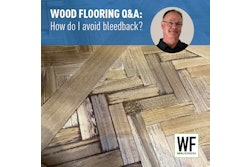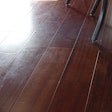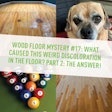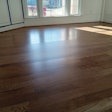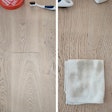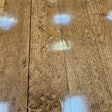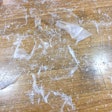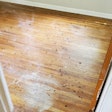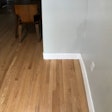The Homeowner’s Issue
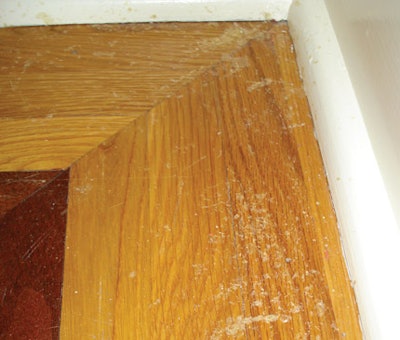
The customers wanted an old site-finished floor recoated before a wedding shower. They contacted a flooring contractor to clean and recoat the existing floor. Within a few months, the finish used to recoat the floor began to turn white near the perimeter of the rooms. They contacted the contractor, who said he didn’t know what caused the peeling because he had followed the manufacturer’s recommendations. He was reluctant to do anything and advised them to call the finish manufacturer or a flooring inspector.
Roy: The Inspector’s Observations
I observed finish peeling along the room perimeter in several areas within approximately 3 inches from the base shoe. I performed a finish adhesion test using 2-inch-wide tape, and the floor finish peeled the full width of the tape down to the original finish.
RELATED: The Recoating Riddle: Find the Right Clues When Recoating Wood Floors
The original floor finish had no abrasion marks and was still glossy. I continued the tape test further into the room, and the finish stopped peeling about 3 inches from the base shoe. The remainder of the field was well-adhered. I concluded the finish failed due to improper surface preparation procedures before coating. It was apparent there were no hand abrasion scratches around the perimeter of the room where the floor buffer could not reach—the contractor took a shortcut.
Blake: The Attorney’s Analysis
If the contractor did not properly prepare the areas near the baseboard, then he is surely responsible for fixing the problem. The inspector tells me the only fix is to refinish the floor. The contractor’s shortcut could cost him in ways he might never have anticipated. To refinish the floor again, the furniture will need to be moved, the room will need to be sealed off, and the customer might need to move out. In the legal world, these potential costs are called “consequential damages.” Who pays for them? Hopefully the contractor had a well-written agreement disclaiming responsibility for consequential damages. If not, then the contractor will be responsible for damages that were a “reasonably foreseeable” consequence of his negligence. In this case, I could argue that almost all of the items mentioned above would be reasonably foreseeable consequences of refinishing the floor again. While the contractor’s insurance policy will not pay to refinish the floor, it might cover the consequential damages stemming from his negligence. This 3-inch shortcut could cost the contractor a bundle and also force him to tender an insurance claim.
The opinions expressed here are those of the individual contributors alone.

















